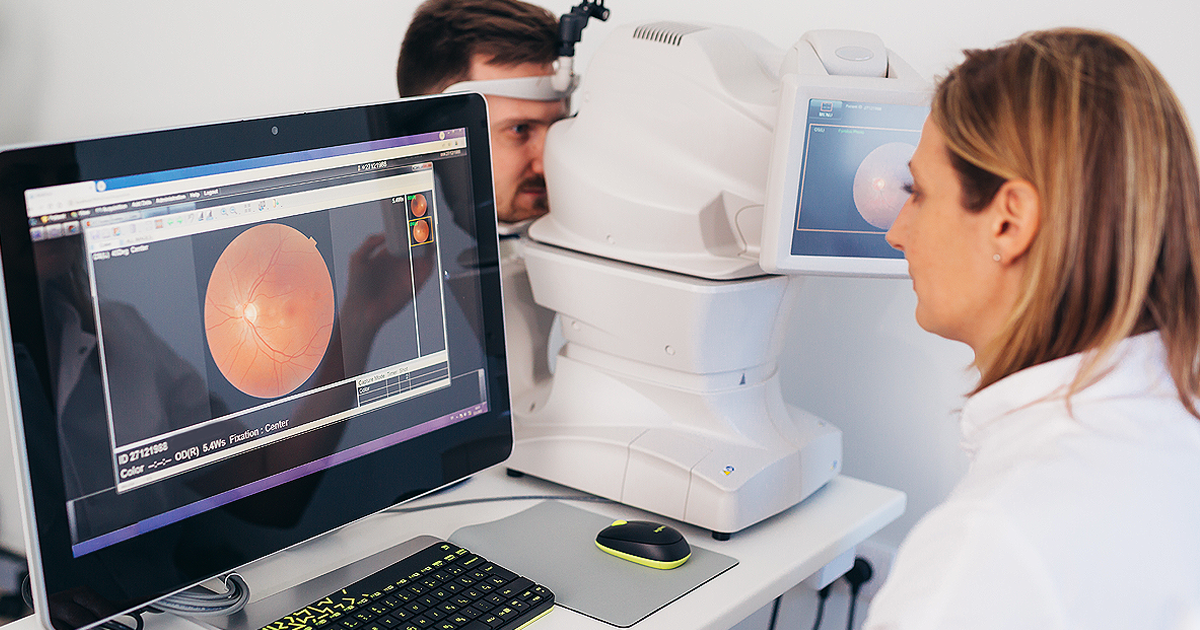Summer clouds might bring a refreshing sprinkle or a booming thunderstorm. Cloudy vision, however, makes it hard to see life to the fullest; but when clouded vision is due to cataracts, they’re very treatable. To draw attention to the detection and treatment of cataracts, the American Academy of Ophthalmology and Prevent Blindness have designated June as Cataract Awareness Month.
What exactly are cataracts?
A cataract is a clouding of the eye’s lens that affects the way light passes through the eye. It’s also a leading cause of vision loss, affecting more than 25 million Americans and causing 51% of blindness in the world. What’s more, Prevent Blindness projects that 25 million to grow to 38.5 million in the next 15 years. (1)
Prevent Blindness says that typically, cataracts form in both eyes, that 95% are related to age, and they’re most common after age 40. Aging, infections, certain medicines, injuries and exposure to heat or radiation can cause cataracts, and diseases such as diabetes also can prompt the development of the condition. (1)
Plus, cataracts can be unpredictable: Some progress slowly, whereas others worsen quickly; some develop to a degree but never worsen. (1)
A comprehensive eye exam can help spot cataracts early
You can’t always see the obvious effects of cataracts. Depending on how quickly they advance, someone might not recognize he or she is suffering from the condition for quite some time.
Employees should see their eye doctor regularly for a comprehensive eye exam, but these are a few symptoms a person might notice when cataracts are forming, according to The Mayo Clinic: (2)
• Clouded, blurred or dim vision
• Difficulty with vision at night
• Sensitivity to light and glare
• “Halos” around lights
• Frequent changes in eyeglass or contact lens prescription
• Fading or yellowing of colors
• Double vision in 1 eye
And even more value with an eye exam
The good news? Patients who have cataract surgery experience improved vision almost 90% of the time, according to Prevent Blindness.(1) And of course, before treatment comes detection—and that’s where employers, brokers and companies’ vision benefits come in, making it easy and affordable. With vision benefits, members may pay no eye exam co-pay, or a have very low co-pay like $10.
The National Eye Institute, which works to educate consumers on vision issues and eye care, points to eye exams as a way to allow the doctor to identify cataracts before a patient is even noticing the effects. When caught early, cataract symptoms can be addressed with simple solutions such as eyeglasses, brighter lighting or anti-glare sunglasses.(3) In addition, a comprehensive eye exam can detect early signs of eye diseases such as glaucoma, as well as serious health conditions including diabetes, high blood pressure and tumors.(4)
What employers and benefits brokers can do
It makes sense that earlier detection can also lead to better health and wellness outcomes for your employees, and translate not only into a happier, healthier, more productive workforce, but into bottom-line savings. In fact, a 2015 Workforce report found employers can gain $7 for every $1 invested in vision coverage. Put another way: It’s a savings of $8 billion in lost productivity every year due to the treatment of chronic illness.(5)
You can share this EyeSiteOnWellness.com article with employees so they can learn more about detecting and treating cataracts. Also, use the information to encourage your employees to schedule their annual eye exams to protect not only their vision, but their overall health.
If you’re still exploring adding vision care to your benefits package, spend a little time with our Value of Vision whitepaper (free download) to see how vision benefits are a win-win for both employees and employers.
Now that you know more about cataracts, I hope you enjoy those beautiful clouds in the blue sky this summer while helping employees tackle those clouds in the eyes with the help of vision benefits.
BL-1806-CB-630
1. “Cataract Remains Leading Global Cause of Blindness,” PreventBlindness.org, accessed May 23, 2018
2. “Cataracts: Symptoms,” Mayo Clinic, accessed May 23, 2018
3. “Facts about Cataract,” National Eye Institute, 2015, accessed May 23, 2018
4. “7 Health Problems Eye Exams Can Detect,” YourSightMatters.com, accessed May 23, 2018
5. “Special Report: Vision and Dental Benefits—More to See, More to Chew On,” Workforce.com, 2015, accessed May 23, 2018




